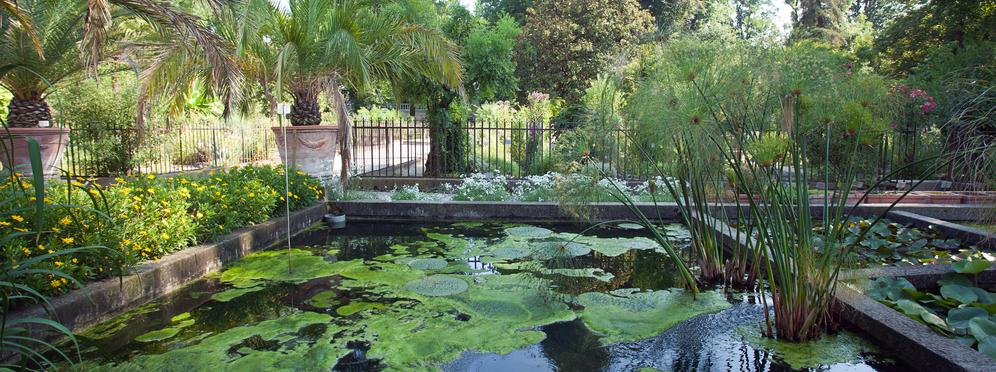Freshwater environment
Several pools in the Botanical Garden contain freshwater plants (hydrophytes).

Several pools in the Botanical Garden contain freshwater plants (hydrophytes). The largest plants are inside the enclosing wall, just beyond the north gate, and their summer flowering is one of the greatest attractions of the Garden. Some aquatic plants grow in other pools, either inside or outside the circular wall. Although hydrophytes belong to several families, they feature similar adaptations due to conditions in aquatic environments. Some float, their leaves surfacing the water and their roots submerged but free, such as duckweed (Lemma minor L.) or water hyacinth [Eichhornia crassipes (Mart.) Solms], with its typical inflated leafstalks, the spongy tissues of which contain air, enabling the plant to float. Others, instead, are anchored to the bottom, such as water lily (Nymphaea sp. pl.), sacred lotus (Nelumbo nucifera Gaertn.), Santa Cruz water lily (Victoria cruziana Orbign.), its leaf margins with upturned edges, and papyrus (Cyperus papyrus L.), the marrow of which was used in ancient times by the Egyptians, who shredded it into strips that were then pressed together to obtain a form of very strong paper. The strangest aquatic plant in the Garden is certainly the tiny water meal [Wolffia arrhiza (L.) Horkel ex Wimm.], which grows in a pool just outside the wall, in front of the "botanical theatre". It is the smallest phanerogam of European flora. It is rootless and composed of a single oval leaf, which measures a maximum of 1 millimetre.






